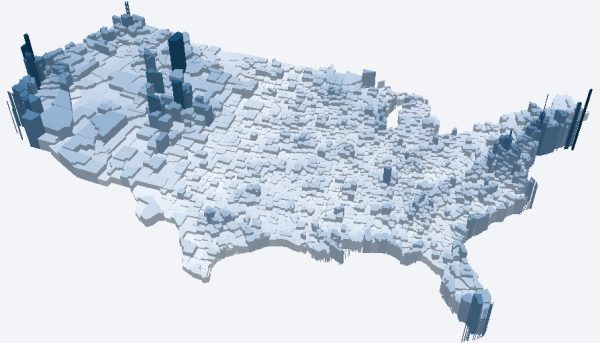Why Data Mapping Can Help Your Business
Imagine getting lost in a new city without a map or GPS. That’s the same thing that happens to a business without an updated data mapping software. Data mapping is the process of linking data from one information system of the business to a different data from another information system. To connect these data sets, you need a predefined set of methods. Data mapping is very beneficial to any business as it helps minimize various potential issues that result to late or no development in the business.
With data mapping, managers and other stakeholders can easily understand large amounts of data without any confusion. Aside from this, finding unique business names is also vital in creating your empire.
Benefits of data mapping
Data mapping is not only a good to keep updated records but has the following advantages:
– Get all the company’s information in an organized manner.
– With easy access to information, it results in faster decision making.
– Increased efficiency in all business operation including resource management for startups.
– Through improved customer relations, it increases sales and overall profit. IT Services provider may analyze all the requirements made by a client and they can help you create solutions to meet them.
– It gives the managers and workers ability to identify any emerging trends and act on them
– It is also an excellent method to get your business in Google Maps
Data mapping techniques
Different techniques can be used to transform data from different information systems in an organization to one visual representation. These techniques include:
Data-driven mapping- it involves evaluating data from two different sources simultaneously using heuristics and statistics. The analysis is done to discover complex mapping between the two data sets. It is the most common technique since it automatically finds transformations between the two data types.
Transformation logic- this technique is used to create applications responsible for data mapping.
Semantic- Semantic mapping is similar to the auto-connect feature that is used in graphics mapping. The only difference is that the metadata registry can’t be used to look up for data element synonyms. Semantic can only discover exact matches between data columns.
Hand-coded- this involves data mapping while using graphical mapping tools, procedural code or by creating XSLT transforms.
Data mapping software
Different companies are slowly generating new and better software to help map your data. They are well-equipped with tools ad features that help regulate customer service and relationship through keeping updated customer data. The software include:
- Big data
Big data software is made on the basis that the clients drive businesses. In small businesses with fewer customers, the big data software is not a necessity. However, if you own a big company that serves over one million customers, it is imperative that you install the big data software in your company. To build a good relationship with your customers, you must remember them and be guaranteed of a personal relationship with the business. This cannot be achieved if the business cannot manage the customer’s personal information. More details concerning customers’ personal information can be acquired here. Big data is a customer relation that helps update every worker in the business about the customer and their relation to the company. It also shows how long the client has been working with the company and previous sales. Having big data in your company is a good way to beat your competition while increasing your sales and overall profit.
- eSpatial
eSpatial is a data mapping software that allows you to create data visualizations from your spreadsheets. It uses the techniques of changing data on spreadsheets to eye-catching and informative visualizations. The data from your spreadsheets is mapped on Google Maps. eSpatial guarantees the benefit of better communications, increased efficiencies, higher profits, and clearer insights. Using eSpatial, it makes it easy to view your business’ location. It allows you to create color-coded maps, beautiful maps, and charts and helps you make informed decisions since you have all the data at your fingertips. It is a good way to increase your sales as most people can easily track your location.
- Maptive
Maptive is a data mapping tool that is developed for easy data mapping. Maptive can easily be used even by people with little knowledge of data mapping software. Maptive is one of the cheapest software to use in data mapping. It collects data from your spreadsheets and gives you an option of deciding how you want the data to appear on maps. It is linked to Google Maps for easy location.
There are many data mapping software on the internet to use in your data mapping activity. Before choosing a specific software to ensure that it can do the following:
– Offers standard data visualization features
– Should be able to perform data analysis which helps managers make informed decisions.
– Easy to use. It should require less or no training.
– It must be linked with cloud for easy retrieval of data
– It must be capable of handling large data for big enterprises
– Ability to generate reports quickly. The reports must be clearly outlined in easy-to-follow guidelines.
Data mapping has proved to be the only working alternative to lost records and mismanaged records. Data mapping helps a company generate updated reports that help in running the business. Use the best data mapping software from the internet to effective map your data and increase your profit.









